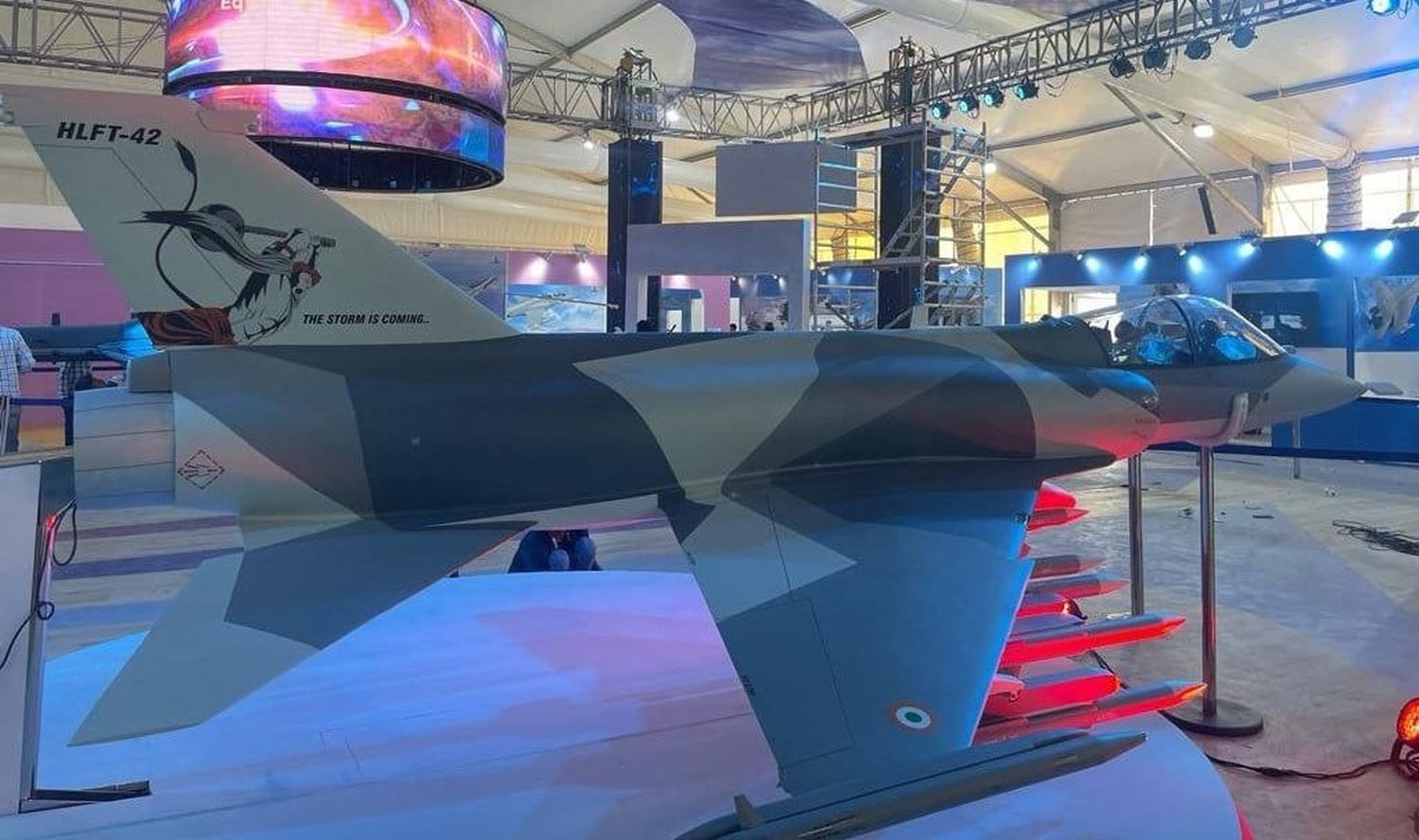Hindustan Aeronautics Ltd (HAL) presented during the first day of the Aero India 2023 international show a project for a supersonic (but armed to the teeth) advanced training and LIFT aircraft, called HLFT-42.
Aero India 2023
And here it is— the HAL HLFT-42 ???
Definitely a good looker and a definite descendent of the Marut HF-24.
All the best to this programme ??
Better photos later. pic.twitter.com/YV1kuSbwQj
— Vayu Aerospace Review (@ReviewVayu) February 13, 2023
HAL developed the HLFT-42 project on its own with the intention of providing the Indian Air Force (IAF) and export customers with a new generation of advanced training and supersonic Lead-in Fighter Trainer (LIFT) to train future fourth and fifth generation fighter pilots for today’s demanding combat scenarios.
The HLFT-42 design is based heavily on the HF-24 Marut, the first fighter aircraft designed and built in India in the early 1960s, whose design team was led by renowned German engineer Kurt Tank.

But beyond its sixties lines, HAL reports that the HLFT-42 will come equipped with a fly-by-wire flight system, the latest technology in pilot training and a full complement of combat sensors, and operational capabilities, such as an AESA radar, an IRST infrared sensor and a very important weapons capability (10 ASTRA medium-range air-to-air missiles and two ASRAAM short-range missiles).
See also: Exportable Su-57E, Checkmate, MiG-35D… Rostec to invest heavily in Aero India 2023
The specifications provided by HAL for the HLFT-42 are as follows:
- Length: 16 m
- Wingspan: 9 m
- Height: 4.6 m
- MTOW: 16,500 kg
- Internal fuel capacity: 3500 kg
- External load: 4,500 kg
- Hardpoints: 11
Enjoyyyyy with the HAL HLFT-42 ?? pic.twitter.com/IXtq47sykG
— Vayu Aerospace Review (@ReviewVayu) February 13, 2023
A competitor to the Tejas?
Beyond the oddity that the HLFT-42 is based on an aerodynamic design developed in the late 50’s and early 60’s, the published characteristics seem to make it a competitor to the Tejas, designed and manufactured by HAL itself.
Despite the fact that in several characteristics the HLFT-42 would surpass the Tejas (MTOW, external and internal fuel load) and that both aircraft would probably end up using the same General Electric F404, they are still very close aircraft in characteristics. And the two-seat training Tejas already exists!

It should be easier to adapt the two-seater Tejas for advanced training/LIFT/light fighter roles than to create a new aircraft from scratch. The HLFT-42 project seems to collide head-on with the flagship product of Hindustan Aeronautics Ltd. Perhaps later during the course of Aero India 2023, the company’s management can shed some light on this seemingly controversial business idea.


Comentarios
Para comentar, debés estar registrado
Por favor, iniciá sesión